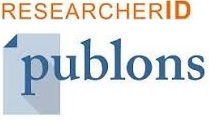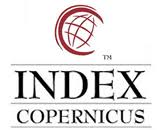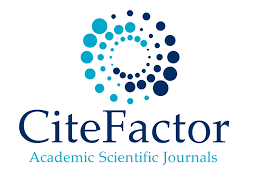FTIR Spectroscopic Studies on Hydration Propensities of the Preferentially Selected OPC Cements Manufactured in Nepal
Abstract
Keywords
Full Text:
PDFReferences
. G. Baral and A. B. Marahatta, Asian J. Appl. Chem. Res., 14(4), 34(2023).
. S. P. Dunuweera and R. M. G. Rajapakse, Adv. Mater. Sci. Eng., 4158682(2018).
. D. Govindarajan, R. Gopalakrishnan, Front. Sci., 1, 21(2011).
. I.Szkła, Cement and Concrete Chemistry (Springer Dordrecht, 2014).
. A.M. Neville, Properties of Concrete (Prentice Hall/Pearson, Harlow, 2011).
. S. Chakurkar (Anawkar) and K.G. Guptha, Results in Materials, 100408(2023).
. S. H. Kosmatka, B. Kerkhoff B and W. C. Panarese, Design and Control of Concrete Mixtures (Portland cement Association, Illinois, 2008).
. S. L. Shrestha, Int. J. Adv. Res. Chem. Sci., 5(7),19(2018).
. F. Kontoleontosa, P. Tsakiridis, A. Marinosa, N. Katsiotisa, V. Kaloidas and M. Katsioti, Mat. Res. 16(2), 404 (2013).
. D. P. Bentz, G. Sant and J. Weiss, J. Mat. Civil Eng., 20(7), 502(2008).
. F. Skvara, K. Kolar, J. Novotny and Z. Zadak, Cement and Concrete Research, 11(2), 247(1981).
. The Government of Nepal, The ministry of Industry, Commerce, and Supplies, Department of Industry. Detailed Study of Cement Manufacturing Industry (Lalitpur, Nepal, 2019).
. Available: https://doind.gov.np/download/Downloads-2021060113420392.pdf
. Shimadzu: IRTracer-100 FTIR Spectrophotometer
. Available: https://www.ssi.shimadzu.com/products/ftir/ftir-spectroscopy /irtracer- 100/index.html
. M. Y. A. Mollah, M. Kesmez and D. L. Cocke, Sci. Tot. Env., 325, 255(2004).
. M. Y. A. Mollah, F. Lu and D. L. Cocke, Sci. Tot. Env., 224, 57(1998).
. S. N. Ghosh and S. K. Handoo, Cement and Concrete Research, 10, 771(1980).
. M. Y. A. Mollah, J. R. Parga and D. L. Cocke, J. Env. Sci. Health, 27, 1503(1992).
. N. Dyson, Chromatographic Integration Methods (The Royal Society of Chemistry, 2nd edition, 1998).
. Y. Bahrambeigi, J. Adv. Res. Civil Eng. Archit., 1(8), 10(2017).
. C. Nethin, M. Smirnova, J. A. D. Gröning and W. Haase. Materials & Design, 195, 109032(2020).
. H. J. H. Brouwers. Conference paper.
. Available:chrome-extension://efaidnbmnnnibpcajpcglclefindmkaj/https://research.utwen te.nl/files/5667324/Conference13.PDF
. N. Chen, P. Wang, L. Zhao and G. Zhang, Materials (Basel), 13(13), 2918(2020).
DOI: http://dx.doi.org/10.52155/ijpsat.v45.2.6264
Refbacks
- There are currently no refbacks.
Copyright (c) 2024 Anant Babu Marahatta

This work is licensed under a Creative Commons Attribution 4.0 International License.



















